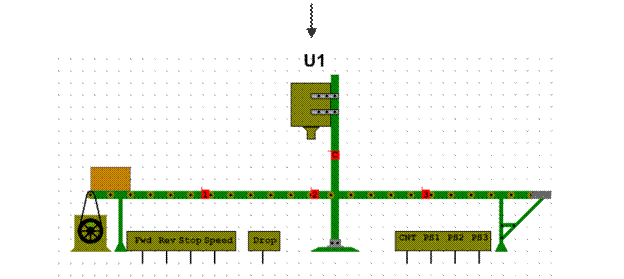Веб-сайты. http://www.med.uni-giessen.de/psychol/internet.htm
http://www.med.uni-giessen.de/psychol/internet.htm Основной сайт, посвященный теории Келли. Содержит ссылки на большую часть мировых Интернет-ресурсов, новые бюллетени, программы тренингов, публикации, а также специальные методики и лечебные курсы. http://repgrid.com/pcp/ Другой крупнейший сайт, посвященный психологии личностных конструктов. Авторы стремятся находить и размещать ссылки на сайты всех стран, связанные с данной темой. Удобен в использовании. http://www.brint.com/PCT.htm Сайт предназначен для терапевтов и серьезных исследователей. http://ksi.cpsc.ucalgary.ca/PCP/Kelly.html Краткая и полная библиография работ Келли, а также работ его последователей. http://www.oikos.org/kelen.htm Сайт отличается жизнерадостным настроением и содержит тщательно подобранную коллекцию цитат из работ Келли, а также список посвященных ему статей. Библиография. Allport, G. W. (1962). The general and the unique in psychological science. Journal of Personality, 30, 405-422. American Psychological Association. (1994) Diagnostic and statistical manual of mental disorders (4th ed.). Washington: АРА Press. Bannister, D., & Mair, J. M. M. (1968). The evaluation of personal constructs. New York: Academic Press. Bannister, D., & Mair, J. M. M. (1977). The logic of passion. In D. Bannister (ed.) Newperspectives in personal construct theory. London: Academic Press. Bohart, A. G., & Tallman, K. (1999). How clients make therapy work: The process of active self-healing. Washington, DC: American Psychological Association. Botella, L. (1995). Personal construct theory, constructivism, and postmodern thought. In R. A. Neimeyer & G. J. Neimeyer (Eds.), Advances in personal construct psychology (Vol. 3, p. 3-35). Greenwich, CT: JAI Press. Bruner, J. (1990). Acts of meaning. Cambridge, MA: Harvard University Press. Burr, V. (1995). An introduction to social constructionism. London: Routledge. Burr, V, Butt, T. (1992). Invitation to personal construct psychology. London: Whurr Publishers. Butt, Т. (1997). The existentialism of Goerge Kelly. Journal of the Society for Existential Analysis, 8, 20-32. Butt, T., Burr, V., & Epting, F. R. (1997). Core construing: Self-discovery or self-invention? In R. A. Neimeyer & G. J. Neimeyer (Eds.), Advances in personal construct psychology. Vol. 4. Greenwich, CT: JAI Press. Caplan, P. J. (1995). They say you're crazy: How the world's most powerful psychiatrists decide who's normal. Reading, MA: Addison-Wesley. Ecker, В., & Hulley, L. (1996). Depth-oriented brief therapy. San Francisco: Jossey Press. Ecker, В., & Hulley, L. (2000). The order in clinical «disorder»: Symptom coherence in Depth-oriented brief therapy. In R. A. Neimeyer & J. D. Raskin (Eds.), Constructions of disorder: Meaning-maling frameworks for psychotherapy. Washington, DC: American Psychological Association. Epting, F. R. (1977). The loving experience and the creation of love. Paper presented at the Southeastern Psychological association. Epting, F. R. (1988). Personal construct counseling and psychotherapy. New York: John Wiley. Epting, F. R., & Leitner, L. M. (1994). Humanistic psychology and personal construct theory. In F. Wertz (Ed.) The Humanistic movement: recovering the person in psychology (p. 129-145). Lake Worth, FL: Gardner Press. Eron, L. В., & Lund, T. W. (1996). Narrative solutions in brief therapy. New York: Guilford. Faidley, A. J. & Leitner, L. M. (1993). Assessing experience in psychotherapy: Personal construct alternatives. Westport, CT: Praeger. Fransella, F. (1995). George Kelly. London: Sage. Fransella, F., Bannister, D. (1977). A manual for repertory grid technique. London: Academic. Gergen, K. J. (1985). The social constructionist movement in modern psychology. American Psychologist, 40, 266-275. Gergen, K. J. (1991). The saturated self: Dilemmas of identity in contemporary life. New York: Basic Books. Guidano, V. F. (1991). The self in process. New York: Guilford. Hinkle, D. N. (1970). The game of personal constructs. In D. Bannister (Ed.) Perspectives in personal construct theory. London: Academic Press. Honos-Webb, L. J. & Leiner, L. M. (in press). How DSM diagnoses damage: A client speaks. Journal of Humastic Psychology. Hoyt, M. F. (1998). The handbook of constructive therapies: Innovative approaches from leading practitioners. San Francisco: Jossey-Bass. Kelly, G. A. (1936). Handbook of clinical practice. Unpublished manuscript for Hays State University. Kelly, G. A. (1955a). The psychology of personal constructs. A theory of personality (Vol. 1). New York: Norton. Kelly, G. A. (1955b). The psychology of personal constructs. Clinical diagnosis and personality (Vol. 2). New York: Norton. Kelly, G. A. (1961). Theory and therapy in suicide. The personal construct point of view. In N. Farberow & E. Schneidman (Eds.) The cry for help. (p. 255-280). New York: McGraw-Hill. Kelly, G. A. (1969 a). An autobiography of a theory. In: B. Maher (Ed.), Clinical psychology and personality: The selected papers of George Kelly (p. 46-65). New York: Wiley. Kelly, G. A. (1969 b). Ontological acceleration. In: B. Maher (Ed.), Clinical psychology and personality: The selected papers of George Kelly (p. 7-45). New York: Wiley. Kelly, G. A. (1970). A brief introduction to personal construct theory. In: D. Bannister (Ed.), Perspectives in personal construct theory (p. 1-29). New York: Academic Press. Written in 1966. Labouvie-Vief, G., Hakin-Larson, J., DeVoe, M., & Schoeberlein, S. (1989). Emotions and self-regulation: A life-span view. Human Development, 32, 279-299. Lachman, R., Lachman, J. L., & Butterfield, E. С (1979). Cognitive psychology and human information processing. Hillsdale, NJ: Lawrence Erlbaum. Lazarus, R. S. (1966). Psychological stress and the coping process. New York: McGraw-Hill. Lazarus, R. S. (1982). Thoughts on the relations between emotion and cognition. American Psychologist, 37, 1019-1024. Lazarus, R. S. (1984). On the primacy of cognition. American Psychologist, 39, 124-129. Lazarus, R. S. (1991 a). Cognition and motivation in emotion. American Psychologist, 46(4), 352-367. Lazarus, R. S. (1991 b). Emotion and adaptation. New York: Oxford University Press. Lazarus, R., & Folkman, S. (1984). Stress, appraisal and coping. New York: Springer. Leventhal, H., & Scherer, K. (1987). The relationship of emotion to cognition: A functional approach to a semantic controversy. Cognition and Emotion, 1, 3-28. Maher, B. (1969). Introduction. George Kelly: A brief biography. In B. Maher (Ed.), Clinical psychology and personality: The selected papers of George Kelly (pp. 1-3). New York: Wiley. Mair, J. M. M. (1970). Psychologists are human too. In: D. Bannister (Ed.), Perspectives in personal construct theory (p. 157-183). New York: Academic Press. Mayer, R. E. (1981). The promise of cognitive psychology. San Francisco: Freeman. McMullin, R. E. (1986). Handbook of cognitive therapy techniques. New York: Norton. McMullin, R. E., & Casey, B. (1975). Talk sense to yourself: A guide to cognitive restructuring therapy. New York: Institute for Rational Emotive Therapy. Miller, G. A., Galanter, E.. & Pribram, C. (1960). Plans and the structure of behavior. New York: Henry Holt. Moreno, J. (1972). Psychodrama (Vol. 1) (4th ed.). Boston: Beacon House. Mumford, L. (1967). The myth of the machine. London: Seeker & Warburg. Neisser, U. (1967). Cognitive psychology. New York: Appleton-Century-Crofts. Neisser, U. (1976 a). Cognition and reality. San Francisco: Freeman. Neisser, U. (1976 b). General, academic, and artificial intelligence. In: L. B. Resnick (Ed.), The nature of intelligence. Hillsdale, NJ: Lawrence Erlbaum. Neisser, U. (1990). Gibson's revolution. Contemporary Psychology, 35, 749-750. Newell, A., Shaw, J. C., & Simon, H. (1958). Elements of a theory of human problem solving. Psychological Review, 65, 151-166. Newell, A., & Simon, Н. (1961). The simulation of human thought. In: W. Dennis (Ed.), Current trends in psychological theory. Pittsburgh: University of Pittsburgh Press. Newell, A., & Simon, H. (1972). Human problem solving. Englewood Cliffs, NJ: Prentice-Hall. Perns, C. (1988). Cognitive therapy with schizophrenics. New York: Guilford Press. Puhakka, K. (1993). Review of Varela, F. J., Thompson, E., & Rosch, E. (1991). The embodied mind: Cognitive science and human experience. The Humanistic Psychologist, 21(2), 235-246. Quillian, M. R. (1969). The teachable language comprehender: A simulation program and theory of language. Communications of the ACM, 12, 459-476. Schank, R. C, & Abelson, R. B. (1977). Scripts, plans, goals and understanding. Hillsdale, NJ: Lawrence Erlbaum. Scheff, T. J. (1985). The primacy of affect. American Psychologist, 40, 849-850. Sechrest, L. (1977). Personal-constructs theory. In: R. J. Corsini (Ed.), Current personality theories (p. 203-241). Itasca, IL: F. E. Peacock. Shepard, R. N. (1984). Ecological constraints on internal representation: Resonant kinematics of perceiving, imagining, thinking, and dreaming. Psychological Review, 91, 417-447. Softer, J. (1970). Men, the man-makers: George Kelly and the psychology of personal constructs. In: D. Bannister (Ed.), Perspectives in personal construct theory (p. 223-253). New York: Academic Press. Stein, N., & Levine, L. (1987). Thinking about feelings: The development and organization of emotional knowledge. In: R. E. Snow & M. Farr (Eds.), Aptitude, learning and instruction. Vol. 3: Cognition, conation, and affect (p. 165-197). Hillsdale, NJ: Lawrence Erlbaum. Stenberg, C. R., & Campos, J. J. (1990). The development of anger expressions in infancy. In: N. Stein, B. Leventhal, & T. Trabasso (Eds.), Psychological and biological approaches to emotion (p. 247-282). Hillsdale, NJ: Lawrence Erlbaum. Stroufe, L. A. (1984). The organization of emotional development. In: K. R. Scherer & P. Ekman (Eds.), Approaches to emotion (p. 109-128). Hillsdale, NJ: Lawrence Erlbaum. Turing, A. M. (1950). Computing machinery and intelligence. Mind, 59(236). In: R. P. Honeck, T. J. Case, & M. J. Firment (Eds.), Introductory readings in cognitive psychology (p. 15-24). Guilford, CT: Dushkin, 1991. Varela, F. J., Thompson, E., & Rosch, E. (1991). The embodied mind: Cognitive science and human experience. Cambridge, MA: MIT Press. Waldrop, M. M. (1985, March). Machinations of thought. Science 85, p. 38-45. Webber, R., & Mancusco, J. C. (Eds.). (1983). Applications of personal construct theory. New York: Academic Press, p. 137-154. Weizenbaum, J. (1976). Computer power and human reason: From judgment to calculation. San Francisco: Freeman. Zajonc, R. B. (1980). Feeling and thinking: Preferences need no inferences. American Psychologist, 35, 151-175. Zajonc, R. B. (1984). On the primacy of affect. American Psychologist, 39, 117-123. Zeihart, P. F., & Jackson, Т. Т. (1983). George A. Kelly, 1931-1943: Environmental influences. In:J. Adams-Webber and J. Mancusco (Eds.), Applications of personal construct theory (p. 137-154). New York: Academic Press.
|




